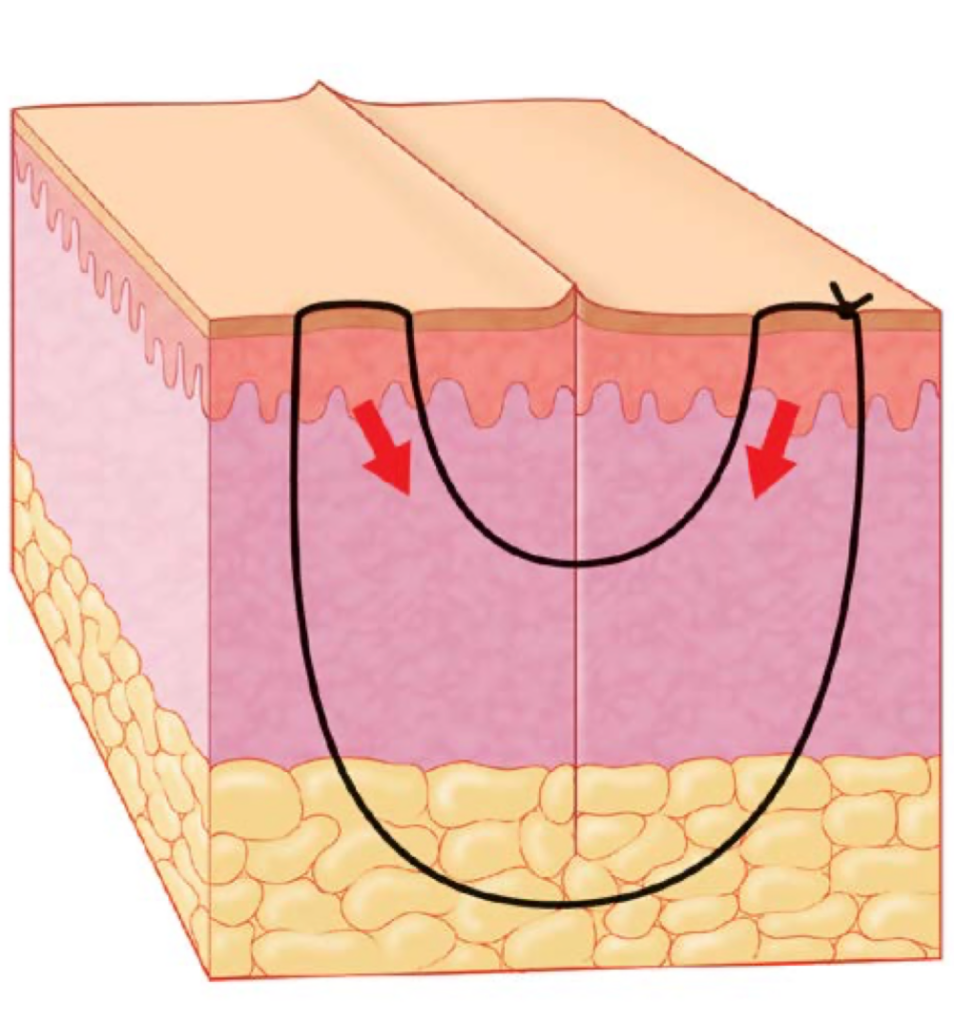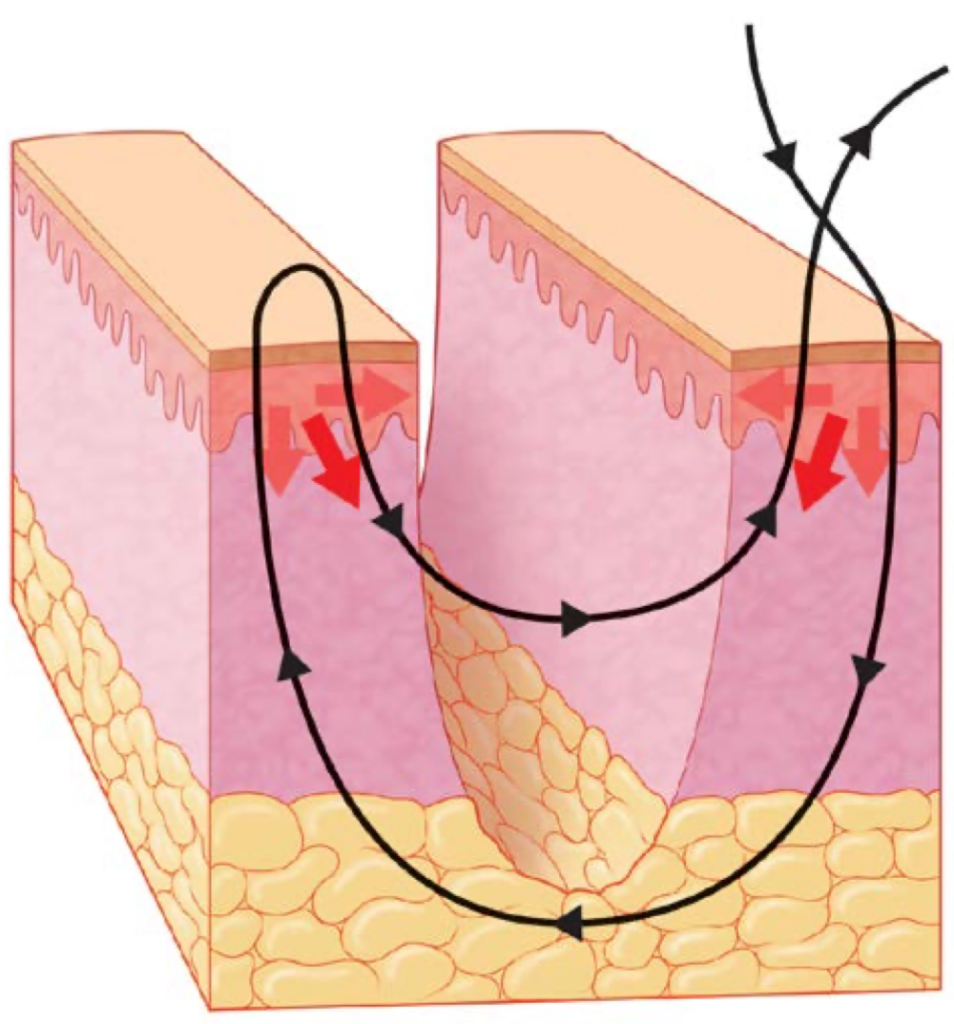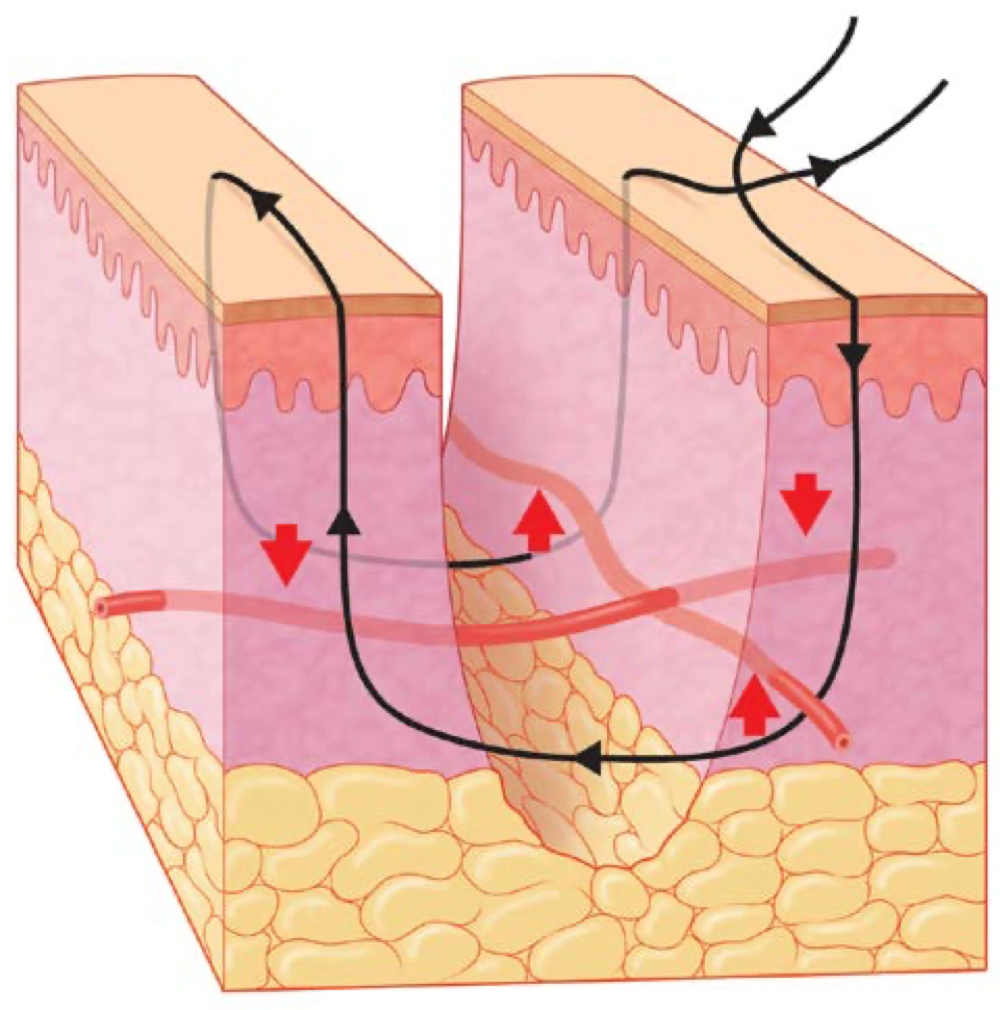Brief Summary
Mattress sutures promote wound edge eversion, even when skin edges are under tension. This technique combines the advantages of the deep dermal (removing tension from the skin surface) and the epidermal simple interrupted suture (wound edge approximation & eversion).Technique (Vertical Mattress)

Original illustration by Yazdani Abyaneh, Mohammad-Ali Levitt, Jacob O in “Understanding the logic of common suturing techniques in dermatologic surgery” accessed from Dermatology Online Journal

Original illustration by Yazdani Abyaneh, Mohammad-Ali Levitt, Jacob O in “Understanding the logic of common suturing techniques in dermatologic surgery” accessed from Dermatology Online Journal
- Start with a “big bite”, entering the tissue approximately 1cm from the wound edge.
- Exit at approximately the same distance on the opposite wound edge.
- Reload needle and use a “backhand” approach.
- Pass more superficially, entering approximately 2mm from the wound edge.
- Exit at approximately the same distance on the opposite wound edge.
- Instrument tie.
Alternative (Horizontal Mattress)

Original illustration by Yazdani Abyaneh, Mohammad-Ali Levitt, Jacob O in “Understanding the logic of common suturing techniques in dermatologic surgery” accessed from Dermatology Online Journal
- Start with a “big bite”, entering the tissue approximately 1cm from the wound edge.
- Exit at approximately the same distance on the opposite wound edge.
- Reload needle and use a “backhand” approach.
- Reenter tissue on the same side, approximately 1cm away along the plane of the wound
- Return to the original entry side, approximately the same distance from the wound edge and along the plane of the wound creating a square of entry/exit points
- Instrument tie.